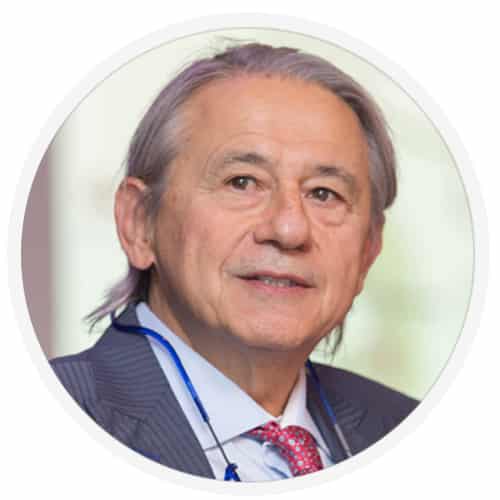It is very important to diagnose endometriosis early in the life of teenage girls and young women. This is because the earlier the disease is diagnosed, the easier it is to manage and prevent its consequences in later stages.
However, endometriosis in teenagers and young women is especially challenging to diagnose because it differs from that in adults.
It is critical to treat a teenager or young woman with endometriosis with support, compassionate care, and empathy. However, this is not enough. We must do more. This includes providing an early and accurate diagnosis, education, and intervention in order to halt the progress of the disease.
Dr. Seckin’s goal in both his practice and in establishing the Endometriosis Foundation of America is to increase awareness about the disease and the availability of proper treatment. This way, doctors and patients alike can catch this disease as early as possible and limit the damage it causes to the body.
For clarity on this page, we use the word “teenager” to describe women between ages, 13 and 18, “young woman” for women between ages, 19 and 23, and “adolescents” encompassing both of these age groups.
Get a Second Opinion
Our endometriosis specialists are dedicated to providing patients with expert care. Whether you have been diagnosed or are looking to find a doctor, they are ready to help.Our office is located on 872 Fifth Avenue New York, NY 10065.
You may call us at (212) 988-1444 or have your case reviewed by clicking here.
About ovulation
Ovulation is the release of an egg from the ovaries each month. Most girls do not ovulate initially and therefore their periods are irregular. For further reference, see the ovulation video below.
Prevalence and symptoms of endometriosis in teenage girls and young women
Most women with endometriosis start experiencing symptoms in their teenage years. Endometriosis has been found in girls as young as age 8. According to an interesting theory, endometriosis may even start forming in newborns.
The most common lesions, which appear clear and red in adolescents are also the most painful and the most difficult to treat. Endometriosis in adolescents is usually peritoneal, which corresponds to stage I or stage 2 disease. Treating endometriosis with excision surgery at its early stages results in a better outcome.
The most common symptoms of endometriosis in adolescents differ from those of adults, and include:
- pelvic pain throughout the cycle
- gastrointestinal disturbance
- urinary tract symptoms
- irregular periods
Endometriosis is present in approximately one-third of adolescents with chronic pelvic pain or pelvic pain lasting three to six months. This pelvic pain can be cyclic and only occur during menstruation or ovulation. It can also be acyclic and be present throughout the month. There is no correlation between the stage of endometriosis and the amount of pain a patient experiences. Adolescents with endometriosis exhibit a higher incidence of pain syndromes, mood conditions, and asthma.
Schedule an appointment with a doctor who is familiar with endometriosis who can conduct a “Q-tip” exam or an external sonogram in place of an internal exam to rule out congenital anomalies of the reproductive tract
Evaluation in teenage girls and young women
What should I do?
Before you go and see your doctor, obtain a family history from as far back as possible. Find out whether any women in your family had endometriosis, infertility, pelvic surgeries, or any of the symptoms of endometriosis.
Keeping a journal of your pain with information about how it feels and its frequency as well as your cycle can also help.
What should my doctor do?
The doctor might want to conduct a vaginal exam and tests such as MRI with contrast as well as blood and urine tests
Treatment in teenage girls and young women
Do’s
Excision surgery is the best method to treat endometriosis. The complete laparoscopic excision of endometriosis lesions can reduce pelvic pain, the occurrence of painful periods and painful bowel movements, tenderness, pain during exercise, intestinal cramping, and bladder pain in teenage girls. This does not depend on hormonal suppression
Some studies have shown that birth control therapy such as combination estrogen and progestin therapy can reduce post-operative pain and the risk of recurrence rate of the disease.
NSAIDs can also be used for pain management.
Don’ts
Lupron often results in bone density loss and severe side effects and should not be used. Similarly, opiates should be avoided as their use often result in dependency and addiction. Their pain-killing properties often decrease over the long term. Moreover, their prolonged use may actually increase the intensity of perceived pain, a phenomenon called opioid-induced pain sensitivity.
Get a Second Opinion
Our endometriosis specialists are dedicated to providing patients with expert care. Whether you have been diagnosed or are looking to find a doctor, they are ready to help.Our office is located on 872 Fifth Avenue New York, NY 10065.
You may call us at (646) 960-3080 or have your case reviewed by clicking here.
Dr. Seckin is an endometriosis specialist and women’s reproductive health advocate. He has been in private practice for over 30 years at Lenox Hill Hospital with a team of highly skilled personnel.
Dr. Seckin specializes in advanced laparoscopic procedures and is recognized for his expertise in complex cases of deep infiltrating endometriosis of the pelvis. He is particularly dedicated to performing fertility-preserving surgeries on cases involving the ovaries.
He has developed patented surgical techniques, most notably the “Aqua Blue Excision” technique for a better visualization of endometriosis lesions. His surgical techniques are based on precision and microsurgery, emphasizing organ and fertility preservation, and adhesion and pain prevention.
Dr. Seckin is considered a pioneer and advocate in the field of endometriosis.
